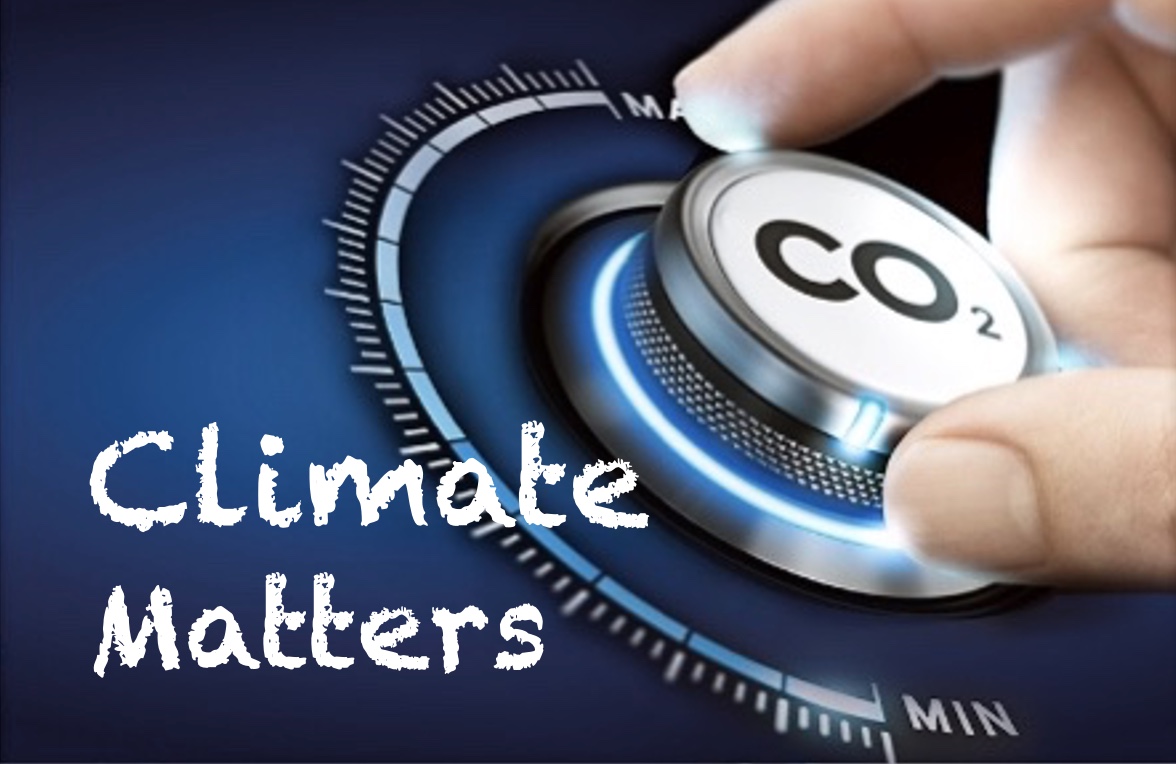 The connection between climate change and atmospheric Carbon Dioxide (CO2) was first noted in the 1800s and the French mathematician and physicist Joseph Fourier likened the earth’s atmosphere to a greenhouse, keeping some of the heat from the sun from escaping to space. In the 1890’s the Swedish chemist Svante Arrhenius pondered the relationship between CO2 and global temperatures and concluded a doubling of CO2 would lead to a temperature increase of some 5C. Modern climatic modelling shows that Arrhenius was not far off the mark. The year 1988 was a turning point, the hottest on record (until then) with drought and wildfires within the US. NASA scientist James Hansen when testifying before Congress said he was “99 percent sure” that global warming was upon us.
The connection between climate change and atmospheric Carbon Dioxide (CO2) was first noted in the 1800s and the French mathematician and physicist Joseph Fourier likened the earth’s atmosphere to a greenhouse, keeping some of the heat from the sun from escaping to space. In the 1890’s the Swedish chemist Svante Arrhenius pondered the relationship between CO2 and global temperatures and concluded a doubling of CO2 would lead to a temperature increase of some 5C. Modern climatic modelling shows that Arrhenius was not far off the mark. The year 1988 was a turning point, the hottest on record (until then) with drought and wildfires within the US. NASA scientist James Hansen when testifying before Congress said he was “99 percent sure” that global warming was upon us.
Nearly 40 years ago we knew that human activity (principally burning coal, oil and natural gas) was changing the world’s climate. Now those changes are ever more extreme and yet still we continue to burn even more fossil fuel.
Many hope for a ‘technical fix’; something we can do to reduce atmospheric CO2 while continuing to burn fossil fuels. One such fix is Carbon Capture and Storage (CCS), touted by many (including our government)) as a plausible part of the fight against climate change, and used by big polluters as an excuse for business as usual. Is CCS a realistic option?
Human activities resulted in emissions exceeding 40 billion tonnes in 2022. Natural CCS includes the carbon capture by growing trees, seawater and other natural processes and accounts for around 43 million tonnes per year. This is actually decreasing because of deforestation. Artificial CCS (of the type the government is promoting) currently extract (worldwide) about 2 million tonnes.
The UK plans to capture and store 20-30 million tonnes of CO2 a year by 2030, and the EU 50 million tons. This is more than 30x the current worldwide capability, and even if this increase is realistic this is a drop in the ocean compared to the 40 billion tons we are emitting.
The downside of artificial CCS is also problematic. Capturing, pumping and storing CO2 takes significant amounts of energy. If this comes from non-renewable sources then it’s simply adding to the problem. If it comes from renewable sources, surely it would be better to use that energy directly to reduce the amount generated from fossil fuels.
Storage itself is a significant problem. Oil companies want to pump it into spent oil-wells, but the reason they want to do this is that it allows the extraction of even more oil. The extra CO2 from burning the extracted oil exceeds the amount of CO2 stored in the wells.
The EU plan for CCS includes 19,000 kilometres of pipeline to transport liquid CO2 to storage sites in the North Sea and elsewhere. In 2020 a liquid CO2 pipeline in rural Mississippi fractured. 1.6km downhill was the village of Satartia, population 300. CO2 is heavier than air, so flows downhill. At around double the levels found in air, CO2 causes mental slowness, increased reaction times, and drowsiness. At higher levels it results in dimmed sight, sweating, tremor, unconsciousness, and possible death. In Satartia people started feeling unwell, some losing consciousness. Emergency vehicle engines failed because of the high levels of CO2. In the end, 45 people (out of a town of 300) were hospitalised and hundreds were evacuated. The European pipelines would pass through some of the most densely populated areas in Europe, with millions of inhabitants.
Does Carbon Capture and Storage seem like a good idea? Wouldn’t it just be easier to reduce our consumption of fossil fuels?
Phil Shotton
Ramsgate Society Lead on Environment and Climate Change